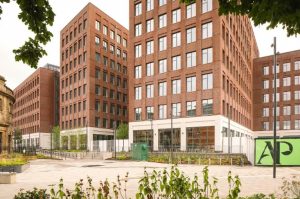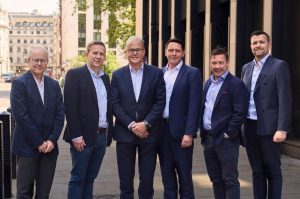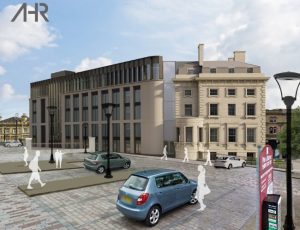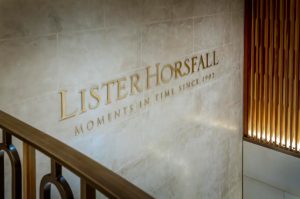Property Focus: The Interview – Julian Monaghan

JULIAN Monaghan is a partner at DLG Architects in Leeds.
DLG Architects is a national practice with offices in Leeds and London that work collaboratively on a wide range of small and large (up to £200m) projects.
Its specialism’s include retail, office, and mixed use as well as projects that require specific expertise on conservation and regeneration.
DLG is handling the conservation and contemporary new build works on a collection of mill buildings to form a major mixed use landmark in Skipton.

1. What are your views of the current state of the commercial property and property development markets?
“During the last few months even the most previously optimistic property person has realised that we are in recession. However, the property and construction industry has been there for many, many months, and the effects of it are ripping through the industry on a weekly basis with redundancies the norm. In particular several of our clients’ manage property funds and if they don’t need to do anything, they would rather sit on their hands.
“Luckily we have quite a diverse range of clients in both the commercial and non-commercial sectors of the industry. In particular we are undertaking a number of mixed use and retail schemes where many of our clients need to be active and cannot afford to let their properties decline.
“Likewise with regards to our work in the food sector, which has been a specialty for over 10 years, it seems to remain fairly buoyant, although as they import equipment from abroad the high cost of the Euro is hurting. So we remain active and as such resolve to be positive as architects have to be.”
2. What key challenges and pieces of legislation do you think will most affect your sector over the coming months?
“Key challenges I believe will be keeping a positive attitude and retaining the loyalty and goodwill of our staff.
“In terms of legislation, energy performance certificates will start to have an effect when the recession ends. Once properties start to sell buyers will be very selective, and in particular property funds will wish to invest in the highest quality properties and the green credentials of our buildings will be there for all to see.”
3. Why do you think Yorkshire is a good place to do business?
“Speaking as a southerner who has lived in Yorkshire for the last 16 years I think it’s a great place to do business, albeit that I personally work throughout the UK. Since I landed in Leeds 16 years ago I found Yorkshire people to be straight talking and pragmatic, but surprisingly they’re always willing to listen to and learn from others’ experience outside of Yorkshire. It is great to bring our experience of working throughout the UK and in Europe to some great Yorkshire projects.”
4. What is your favourite building/development in Yorkshire and why?
“It has to be the award winning The Light in Leeds, which DLG developed for Halifax and Clerical Medical. It took about seven years of my life from the first felt pen sketches through to reality. The greatest enjoyment has been seeing the public visit the large atrium and children look up in awe at the height of the glazing above.
“From a personal point of view it’s brought back to life two listed buildings and combined them with commercial uses creating a new public space that the people of Leeds value. From all the many awards it received I am proudest of the People’s Award, which shows that the people of Yorkshire really appreciate it.”
5. If you could improve anything in the region, what would it be?
“As I travel throughout the UK I am fiercely proud of Yorkshire and in particular Leeds, but I do feel that it suffers in comparison with other cities in that it lacks a real champion. I’m not suggesting a lord mayor but a strong figurehead that can help drive and promote the region nationally and internationally.”
6. What barriers have you had to overcome during your career and how have you overcome them?
“One of the main barriers I had to overcome was moving up from London to develop the Leeds office of DLG Architects. I knocked on lots of doors and whilst I was made welcome, the follow up was much more difficult. We were just entering the early nineties recession and there was limited work about.
“In the end whilst I did manage to persuade some clients to place work with us, it was through working with our southern based clients. Competing against Yorkshire developers for projects in Yorkshire and the north we were able to demonstrate our own particular skills proving what we could bring to their projects.
“I’m pleased to say that we’ve gone on to work with most of the leading development and property companies throughout the north and continue to maintain a great relationship with all of them.”
7. What was your first job and how did you enter your current line of work?
“My first job was in a small practice, John Hornby Architects, in Wimbledon village undertaking large residential house conversions. It was great experience as we were given a fair amount of responsibility. Albeit that after 18 months the desire to work in the City of London was too great and I joined Damond Lock Grabowski & Partners, now DLG Architects. in its London office in the west end.
“At the time I was fortunate to be part of an active expanding practice and was given lots of responsibility, which led to me becoming the first new partner in the practice at age 29.”
8. What do you most enjoy about your job?
“The fact that no two days are the same, and of course working with my partners and our fantastic staff. It’s great to see how many of our staff have developed and stayed loyal to the company over the years.
“I’d also like to think DLG has made a difference to the environment by working in the public domain, as its an opportunity to create some real quality places and hopefully make a difference to people’s lives.”
9. What is the best piece of advice you’ve ever been given?
“Only worry about the things that you can do something about. It’s helped me sleep a little better at night.”
10. And the worst?
“Don’t worry it’ll be alright.”








